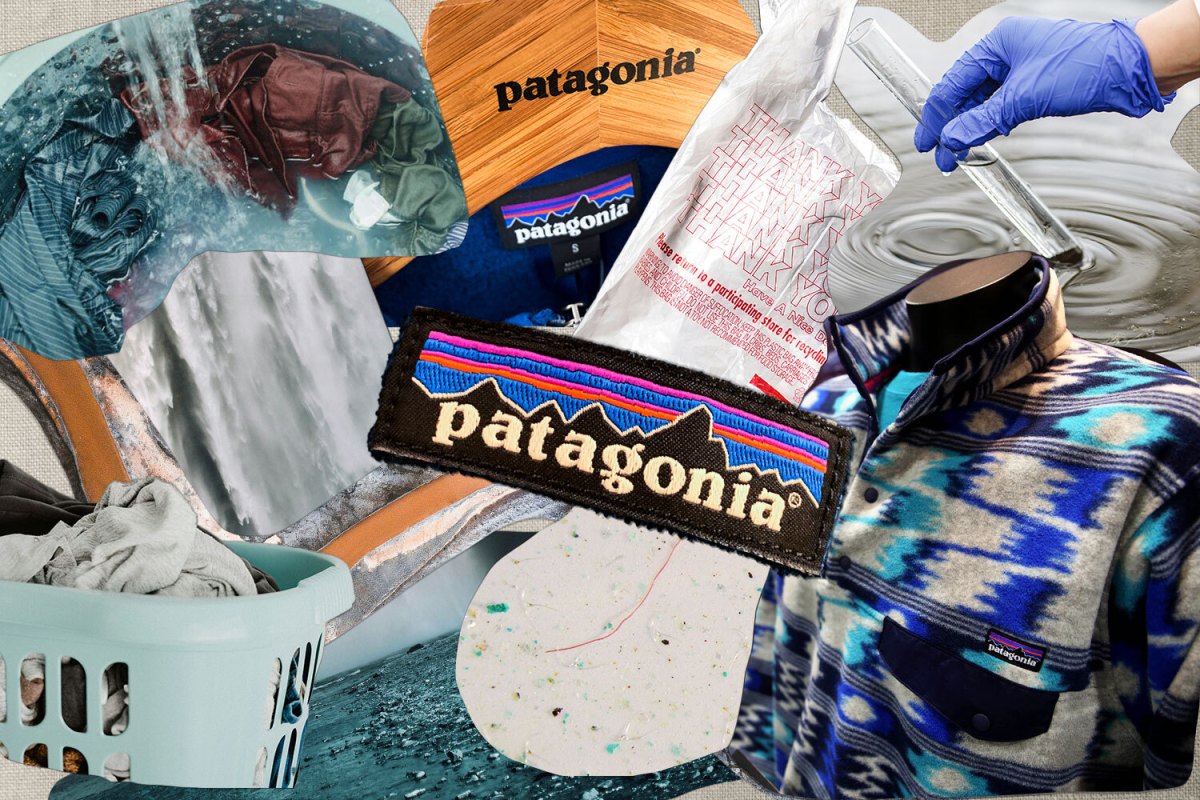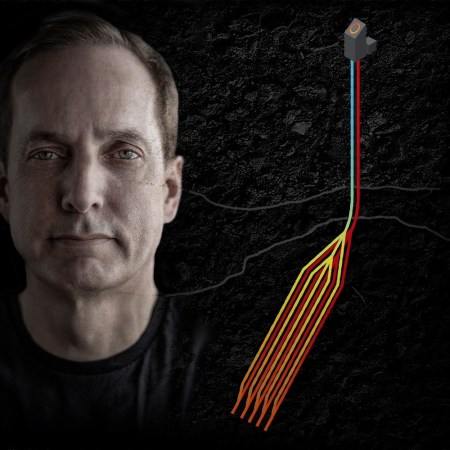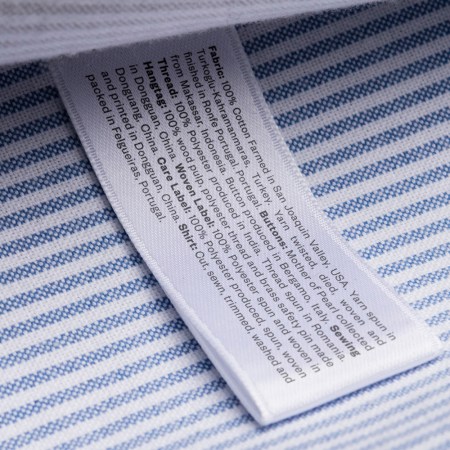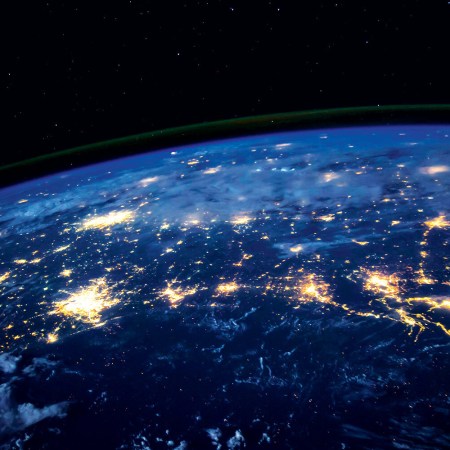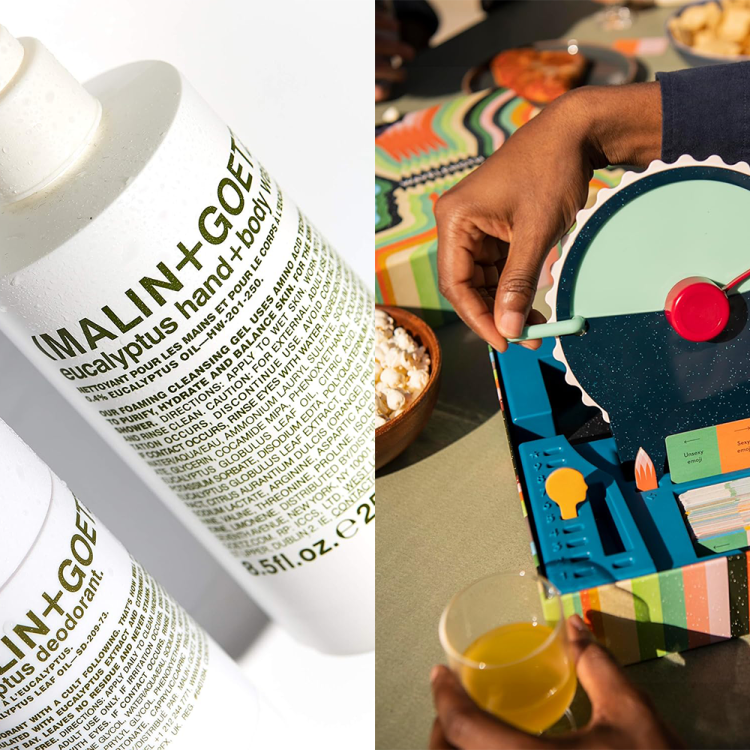When you buy a fleece jacket from Patagonia, you know you’re buying from a company that cares about the planet. But these days, customers of the outdoor gear brand may also get a more novel sensation: that you might actually be helping the environment by expanding your wardrobe.
Browsing the web page for one of the brand’s most popular products, the Men’s Better Sweater 1/4-Zip Fleece, the environmental and humanitarian bonafides outshine the details people normally look for when buying a jacket, like warmth, pockets and good looks. Customers are met with phrases like “100% recycled polyester,” “low-impact process,” “Fair Trade Certified factory” and “1% for the Planet,” the latter an initiative through which the company has been donating 1% of its sales since 1985. Then there’s the banner at the top of the website that reads “Earth Is Now Our Only Shareholder,” a reference to a move the company made in 2022 that transferred ownership to both a trust and a nonprofit in order to protect Patagonia’s values and use profits for the purpose of “fighting the environmental crisis and defending nature.”
If you also care about these important issues, can you afford not to buy this fleece?
Longtime fans of Patagonia may take umbrage with this characterization, seeing as part of Patagonia’s stated mission for years has been to convince people to only buy what they need. On Black Friday in 2011, the company famously ran an advertisement in The New York Times that read “Don’t Buy This Jacket.” In 2018, founder Yvon Chouinard and then-CEO Rose Marcario took their company’s stance a step further when they announced a new mission statement: “We’re in business to save our home planet.” The implication is that their business isn’t, first and foremost, to sell more stuff.
But in November 2023, in a widely shared and celebrated essay decrying the proliferation of low-quality goods, published in the New York Times Opinion section, Chouinard explained that Patagonia has had staying power not simply because the company’s products are high-quality, but also because they have another unique trait.
“People ask me how [Patagonia] has managed to stick around so long when the average life span of a corporation is less than 20 years,” he wrote. “I tell them it’s been our unrelenting focus on quality, which includes making things that last and that cause the least amount of harm to our planet.”
If you absolutely must buy a new fleece jacket or a vest that can go from the office to the outdoors, who wouldn’t want one that does “the least amount of harm to our planet”?
One big problem with that statement, as Patagonia has discovered in recent years, is a tiny pollutant that is causing experts to raise the alarm: plastic microfibers.
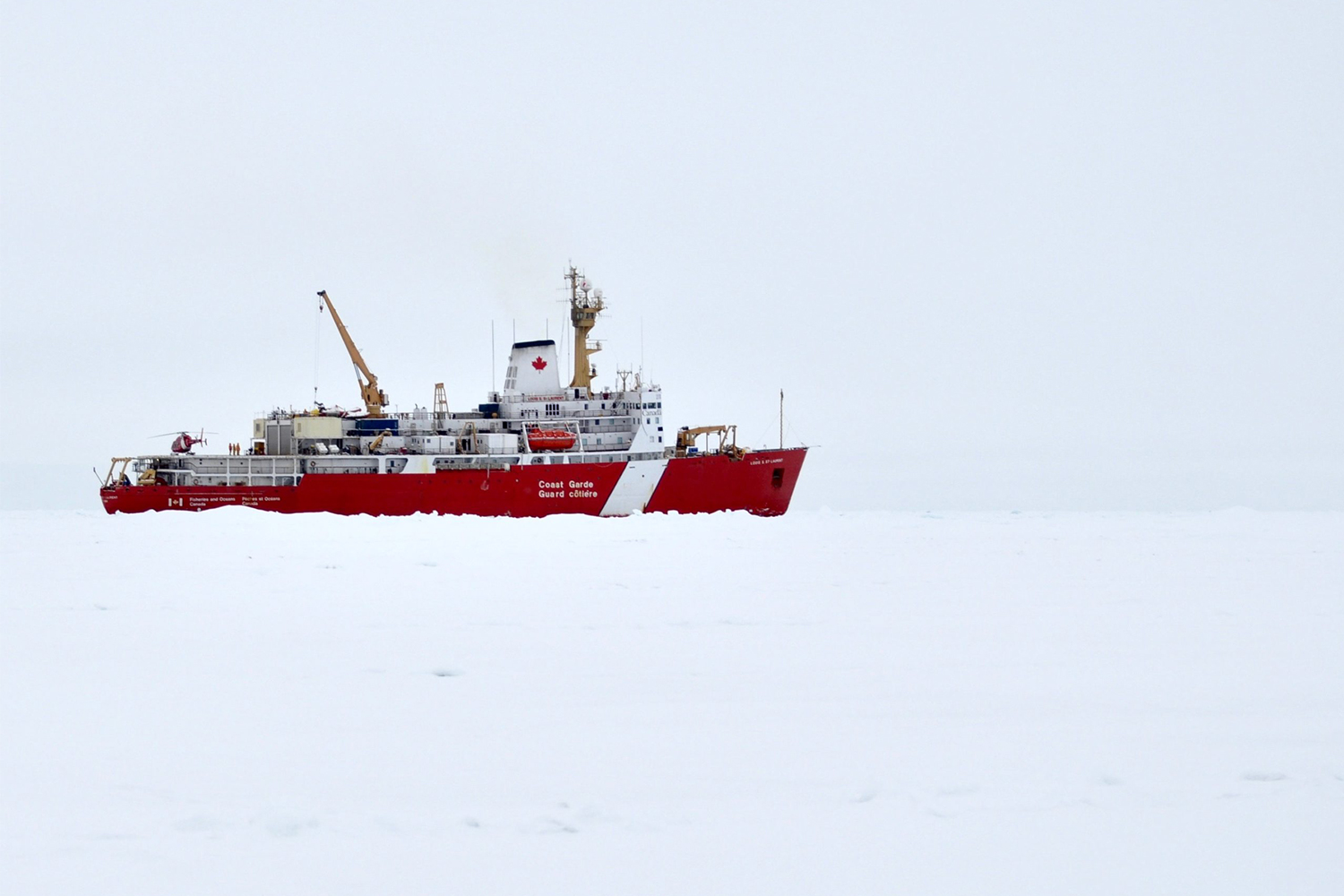
The Arctic Study
It’s hard to fathom the amount of plastic that is being dumped into the sea. When you hear a statistic like 4.8 to 12.7 million metric tons of plastic waste enter the ocean every year (that oft-cited range is from the last decade, so by now it’s likely increased), maybe the images in your head are the ones plastered at the top of apocalyptic news stories, where mountains of grocery bags, fishing nets and synthetic clothes choke beaches across the globe. Or perhaps you think about the situation closer to home: the sticky plastic bottles of Coke left behind the last time you went to your own local beach, peppering the sand around metal trash bins overflowing with their own detritus. But chances are when you think of this type of plastic pollution, your mind doesn’t immediately go to the Arctic.
Even as our planet feels increasingly small, with explorers who venture to the ends of the earth now able to beam their exploits to our phones in real-time, the Arctic still has an otherworldly appeal. In the minds of people around the globe, the frigid, blue-washed region still feels magical, awe-inspiring, unspoiled by the hand of mankind. The ice caps may be melting, but it still looks pristine.
“Pristine” is exactly the word Shreyas Patankar, a research scientist at Ocean Wise, uses to describe the Arctic. He was part of the conservation organization’s team that, in 2021 in partnership with Canada’s Department of Fisheries and Oceans, published “the most comprehensive study to date on Arctic Ocean microplastics,” as they noted at the time.
Microplastics can come in many forms. By definition, they’re plastic particles smaller than five millimeters in length, which is about the diameter of a pencil eraser. They can be objects that were originally manufactured at that diminutive size, like plastic beads, but often these shards, films and fibers are the remnants of larger synthetic products. They’re not always an eyesore, like that two-liter bottle on the beach, but that doesn’t mean they aren’t there.
Ocean Wise wanted to find out how, if at all, the Arctic Ocean was being impacted by microplastics, so they set out to collect samples in 2016. They didn’t send out ships themselves; as Patankar noted, this type of research is often opportunistic because “it’s too expensive to just send out people to do microplastic sampling.” Instead, they had one research vessel and two Canadian Coast Guard icebreakers gather water for them.
In total, 71 seawater samples were collected near the surface (at depths from three to eight meters), in locations from the Bering Sea off the coast of Alaska to sites near Norway. Another 26 samples were collected at various depths in six areas in the Beaufort Sea, which lies to the north of Alaska and the Northwest Territories, down to 1,015 meters at the deepest. Some water was even collected from the North Pole. The results were, at least in one sense, the worst-case scenario.
“Microplastics were found in every seawater sample that we took there,” said Charlie Cox, the director of the Ocean Pollution and Plastics team at Ocean Wise. “[Microplastics] are totally pervasive, which just reflects the extent to which we use plastic in our lives.”
More recently, research has discovered new “pristine” environments that have been infiltrated by microplastics, like human blood, breast milk and placentas. “In terms of where we are, that gives you a sense of this abundance, this pervasiveness in the environment,” Cox said. This type of pollution is clearly not just about “the environment” in the sense many have come to think about it in the modern era, as a separate entity held at arm’s length from the sphere of humanity; it’s now also about human life in the midst of a plastic crisis.
The Story Behind the “New Yorker” Cartoon That Defines Our Climate Moment
Tom Toro tells us about his cartoon that’s been shared by everyone from Greta Thunberg to Leo DiCaprioAll this may come as a shock to some, but the spread of microplastics, even to a supposedly unsullied environment like the Arctic, wasn’t necessarily a surprise to Cox or Patankar at the time of the study. Working in this field, they were already aware of the growing body of evidence that microplastics are boldly going where no pollutant has gone before. But there was something about this study that astonished Patankar, who joined the research team once the analysis of the seawater samples and the microplastics themselves was already underway.
“People were expecting to find microplastics, because that was already starting to be the story, that microplastics are everywhere,” he said. “What was less expected is the emphasis on textile microfibers and specifically polyester microfibers, and that that would fully dominate what was found. Yes, we found microplastics…but the fact [was] that it’s almost fully dominated by polyester microfibers specifically.” The thickness of the fibers suggested they were coming from the textile industry.
Cox zoomed out from that groundbreaking study, published three years ago, to where we are today.
“It’s well-documented that synthetic textiles are the largest contributor to marine microplastic pollution,” he said. “Around 35% of the microplastic pollution in the ocean is from microfibers — synthetic microfibers that are in the clothes that we wear every day and that we wash every week.”
When you wash clothing made out of plastic, these tiny synthetic microfibers can get flushed into waterways, sneaking through wastewater systems. When you put these clothes in a dryer, the fibers can get vented out into the air; they can also shed simply by wearing them. During the production of these clothes and the trashing of them at the end of their life, these microplastics also find ways to escape into the environment. Patagonia’s own plastic clothing is no different.
As the company explains on its website, they “use recycled polyester more than any other fiber” in their products. Whether or not that polyester is recycled doesn’t matter once the plastic material ends up floating around in the Arctic Ocean.
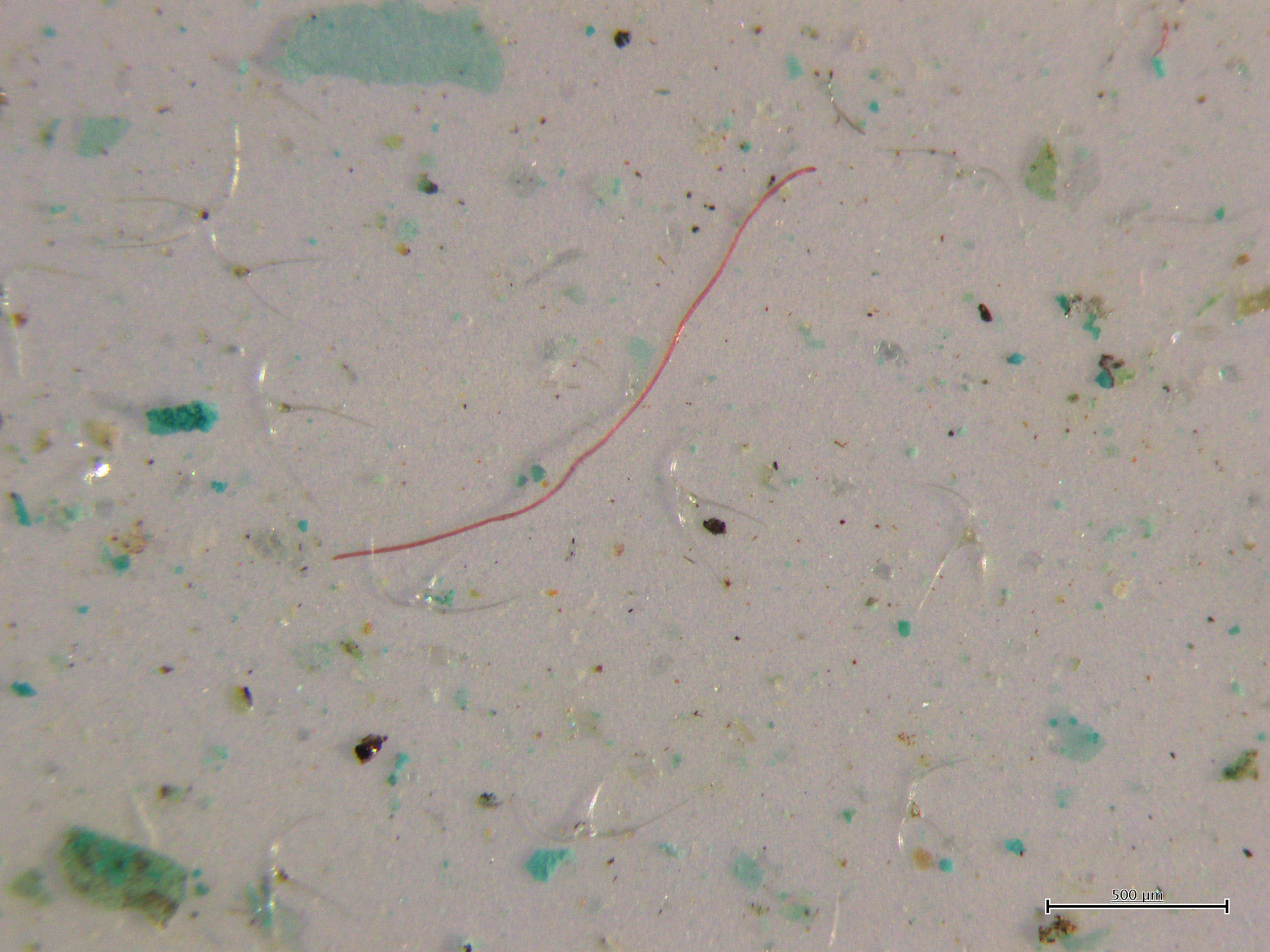
Mitigation vs. Solutions
Patagonia has known about its microfiber problem for years. “Since we first became aware of this problem in 2015, we aspired to be able to have metrics and mechanisms to reduce microfiber pollution,” Matt Dwyer, Patagonia’s vice president of product impact and innovation, wrote in a response to emailed questions.
That year, Patagonia commissioned a study on microfibers, which was conducted by graduate students at the University of California Santa Barbara’s Bren School of Environmental Science & Management. Specifically, the team looked at a phenomenon known as “shedding,” where synthetic clothing releases these microfibers when put through home washing machines, and some of the pollutants find their way into the environment due to their small size. The researchers tested four different Patagonia jackets and one “budget fleece” as a point of comparison.
When the results were published in 2016, the team concluded that “microfibers are a pervasive pollutant and could be affecting ecosystems and human health.” In numerical terms, as Outside reported at the time, the average number of synthetic microfibers released by one fleece jacket during laundering was 81,317. The jacket that shed the most released as many as 250,000 microfibers. (Another study conducted a few years later in partnership with competing outdoor brands concluded that textiles can shed up to 3,500,00 fibers per load and that “‘fluffy’ textiles like fleece” are some of the worst offenders.)
Patagonia uses synthetic fibers (including recycled polyester and nylon) because we create high quality, high performing product for our users’ adventures.
Matt Dwyer, Patagonia’s vice president of product impact and innovation
Since those first findings were published eight years ago, Patagonia has attempted to tackle the problem in a variety of ways. “We developed a repeatable test method, we characterized our most important fabrics, and we set internal thresholds for microfiber shedding that help us make better decisions in fabric development,” Dwyer wrote.
In the company’s latest missive about the subject on their website, titled “Toward an End to Microfiber Pollution,” published in August 2023, Vincent Stanley, the company’s in-house philosopher, makes note of these efforts to reduce shedding. But he also talks about the things Patagonia’s customers can do to help stop the release of these microplastics: washing clothes less frequently, and on a cold and gentle cycle; buying a $35 bag to put your synthetic clothes in when you wash them; and, in line with their previous messaging, building “a wardrobe of fewer clothes of higher quality.”
Ocean Wise has been working with Patagonia for years on both large-scale solutions (filtering microfibers out of municipal water systems) and action that individuals can take. The most recent development on the latter front was a partnership with a third party, Samsung, in which the electronics company introduced a device that, when connected to a washing machine, would filter out 98% of microfibers released during a laundry cycle. In 2023, Time christened it one of the best inventions of the year, though it has yet to be sold in the U.S. In the U.K., it sells for £120, or about $150.
While Cox worked on that initiative, he doesn’t see that as a “solution.” “Ultimately, that’s mitigation,” he admitted. Even if you capture plastic microfibers — in your home laundry or in a wastewater treatment plant — those plastics don’t magically go away. “That’s something that just ends up in a landfill and then you have an environmental leakage risk there,” he said. “If we can actually design out shedding upstream, if we can phase out plastic products upstream, that’s when you actually look at a solution rather than a kind of mitigation effort.”
“Something more transformative would be a shift of the whole industry away from textiles that shed towards low-shedding textiles,” he added, “phasing out these plastic products that we know persist in the environment and are toxic.”
When asked about ways individual people can reduce their role in this kind of microplastic pollution, Patankar was similarly concerned about pushing that narrative.
“I feel uncomfortable putting the burden of responsibility of fixing this challenge on an ordinary person when it is a systemic challenge,” he said. “The reason we are in this place is because plastic production is so cheap and so pervasive and abundant — that’s the root cause of this.”
The Blockchain Growing Pains of a “Capitalist Conservationist”
United By Blue wanted to use NFTs for good. It didn’t go exactly as planned.An Inconvenient Truth
When we buy clothing made of materials with names like polyester, nylon and spandex, it’s easy to forget what we’re really buying: plastic. When asked if this is an accurate generalization — drawing a direct line from these synthetic fabrics to fossil fuels; saying, “These clothes are made of plastic” — Karen Leonas, a professor at the Wilson College of Textiles at North Carolina State University, is quite clear on the answer: “It is an accurate generalization, I’m sorry to say.”
Among other areas in the field of textile sciences, Leonas has studied the environmental impact of the industry and, specifically, investigated the issue of microfiber release and transmission. As an academic, she’s quick to clarify terminology up front: it’s crucial to note that all fabrics produce microfiber pollution, from plastics to natural fibers like cotton and wool. But synthetic microfibers are a form of microplastics, while natural microfibers are not.
In response to a question about whether or not Patagonia has ever considered shifting away from plastics if synthetic microfiber shedding can’t be stopped, Dwyer deflected some of the blame onto this other category of microfibers: “Natural fibers make up the lion’s share of microfibers in the environment and new ones released every year.”
“Patagonia uses synthetic fibers (including recycled polyester and nylon) because we create high quality, high performing product for our users’ adventures,” he added. “We don’t believe it’s practical to replace a lightweight nylon fabric with a natural material that won’t perform and won’t meet our quality standards — after all, form follows function, and function solves a problem.”
The problem Patagonia now has to solve is that, as Leonas explained, there is a difference in environmental cost between plastic microfibers and natural ones.
“The challenge with the synthetic fibers is that they don’t degrade for a very, very long time,” she said, “versus when you have a natural fiber such as cotton or wool or silk, they’re more likely to degrade in a natural environment more rapidly.”
The main issue in getting companies — not just Patagonia, but the entire clothing industry — to take the plastic microfiber problem more seriously is that there simply needs to be more proof: about how much individual textiles shed, the exact harm being caused by synthetic microfibers and whether or not natural fibers are empirically better.
“The question of whether natural fibers are in fact a better alternative is something that keeps coming up,” lamented Cox, “and it’s something that we think is acting as a bit of a blocker towards innovation and moving away from the most harmful synthetics in the apparel industry.”
Even though microplastics have been found in humans, the clothing industry at large is waiting for more specific, direct evidence before they shake up the status quo of using synthetic fiber, a material that makes up 69% of all textiles and is expected to reach nearly 75% by 2030, per a 2021 report from the Changing Markets Foundation.
“You’ve got to be able to measure something before you know how to manage it,” said Leonas, who was part of an American Association of Textile Chemists and Colorists committee that developed a standardized method for testing textile microfiber shedding during home laundering, which was published in 2021. As she sees it, the industry is just at the beginning of analyzing the issue. Researchers are currently looking at all types of variables and how they affect shedding, from the types of fibers to the impact of using recycled versus virgin materials to the impact of different colored fabrics.
The reason we are in this place is because plastic production is so cheap and so pervasive and abundant — that’s the root cause of this.
Shreyas Patankar, research scientist at Ocean Wise
At some point, though, research must turn into recommendations. Patagonia, as Dwyer noted, has developed an internal measurement for acceptable levels of microfiber shedding. Cox has his own idea for what should be done, taking into consideration what’s actually feasible.
“I think where we need to get to is an understanding of the most harmful type of fibers, those that are particularly prone to shedding,” he said. “If you look at how environmental regulations have generally worked across industries, it’s to pinpoint the most harmful and eliminate those and work back in a timescale that is realistic for industry and for the system that we are in.”
The timeline he puts on that? “Realistically, in the next 10 years.”
As someone involved in the textile industry, Leonas thinks a decade is a reasonable timeline, at least to get the information on the worst-offending materials back to brands. What happens after that, she admitted, is up in the air. Clothing companies and retailers are the ones that have to decide to eliminate harmful textiles, she said, “unless legislation gets involved.”
When asked if Patagonia is participating in the type of research Cox is hoping for — finding out the synthetic fabrics that shed the most — Dwyer didn’t offer any details beyond the development of their own internal test method and thresholds for shedding. Cox said Ocean Wise wants to set up a new phase of research with Patagonia “digging into the innovations and the design changes that can reduce shedding,” but, he added, “nothing really that I can speak about at this point.”
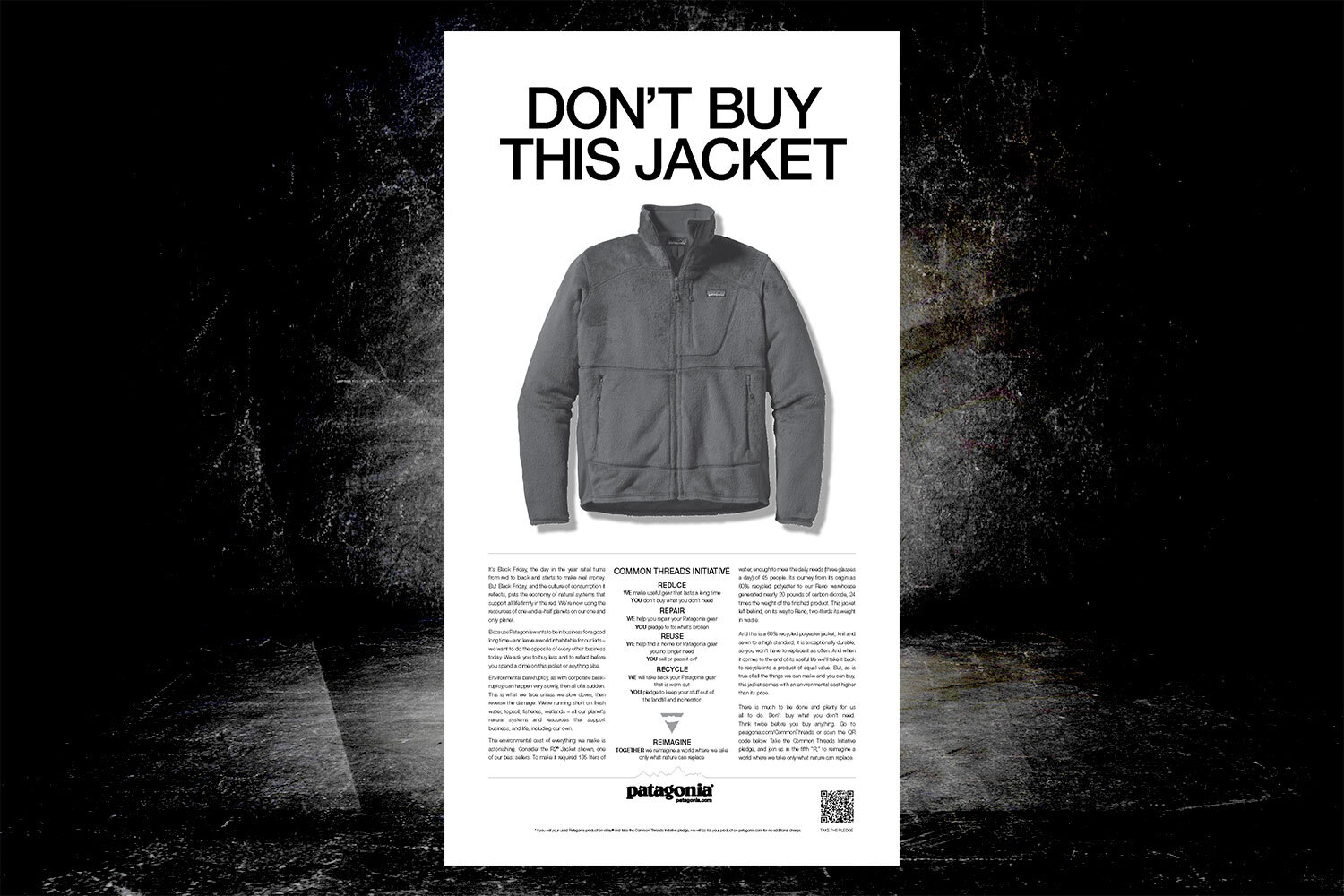
“A Real Catch-22”
Patagonia can preach the gospel of buying less, but the fact remains that they now sell more than a billion dollars worth of gear every year. As Reuters noted in 2023, despite the company offering a program for trading in used gear and reselling it, that part of the business only accounts for a $5 million slice of what the outlet estimated to be around $1.5 billion in annual revenue. And as more and more plastic clothing gets produced, more plastic microfibers end up in the ocean, in the soil, in animals, in us.
The theoretical solution is easy: stop making clothes out of plastic. Implementing such a solution is much more difficult, in ways that Leonas has been contending with throughout her career.
Should all plastics be outlawed in favor of natural fibers? She doesn’t think we’d be able to grow enough cotton or raise enough sheep to clothe the world. Plus, cotton production currently uses huge amounts of water, pesticides and fertilizers. But what about organic cotton, the kind that Patagonia uses? Unfortunately, organic cotton produces smaller yields, so farmers may be more interested in using their land to grow things like food instead. That’s not even considering the humanitarian issues. “I mean, do you want Pakistani forced labor picking your cotton so that you’re not using polyester?” she said. “Do you want child labor because they like children because they don’t hurt the fiber as much because their fingers are littler?”
In her view, it’s not a black-and-white issue on the textile production side. She points a finger more directly in a different direction. “I think consumerism is creating a lot of these particular issues,” she said.
That echoes a sentiment that Chouinard, Patagonia’s founder, expressed to the writer Nick Paumgarten in a 2016 New Yorker profile. “Everyone’s just greenwashing,” he said at the time, lamenting the state of supposedly “sustainable” initiatives proliferating among the apparel industry. “The revolution isn’t going to happen with corporations. The elephant in the room is growth. Growth is the culprit.” Two years later, The New York Times noted that Patagonia’s revenues and profits quadrupled between 2008 and 2018, and that growth hasn’t abated since.
Still, Patagonia is far from the largest apparel brand in the world and not even close to being the dirtiest. Off the top of her head, the worst offenders that Leonas can think of are the Chinese fast-fashion giant Shein and the e-commerce site Temu, the latter a one-stop shop for the kind of low-quality junk that Chouinard railed against last year.
“Those companies [like Patagonia] that are very conscientious, it’s really not a level playing field, because they’re taking all the precautions,” she said. “And those precautions cost money. It’s not inexpensive to be sustainable. So it’s a real catch-22. How do you stay competitive in the marketplace?”
In Patagonia’s case, they’ve not only stayed competitive but thrived under the banner of supposedly doing “the least amount of harm.” It’s an open question, however, whether the least amount of harm, for companies still ultimately concerned with growth and reliant on plastics that keep the fossil fuel industry thriving, is still too much to bear for the health of the planet and all of us living on it.
Dwyer acknowledged the “constant tension” Patagonia experiences while “striving to make progress but under the umbrella of our principles.” But he’s adamant that the company’s work is essential to helping fix the ills of the larger industry.
“Patagonia’s role in microfiber pollution is to continue to be the voice at the table and the willing partner to spend the energy up front to develop the knowledge and solutions to this problem,” he wrote. “We also acknowledge the need for credible third parties to develop peer-reviewed research to help guide our societal understanding around the true impacts of microfiber pollution. And, like any big problem, it’s going to take all of us working all of the angles to get to an answer.”
If, as Cox hopes, researchers find answers in the form of fibers that contribute the most to the microplastic crisis, Patagonia may have to turn its own slogan on itself. Instead of telling customers “Don’t Buy This Jacket,” they may have to issue an internal memo about some of their plastic products: “Don’t Sell This Jacket.”
This article appeared in an InsideHook newsletter. Sign up for free to get more on travel, wellness, style, drinking, and culture.
